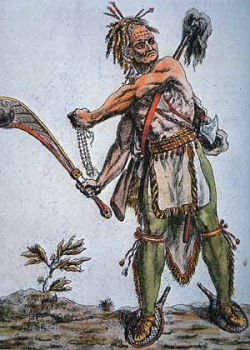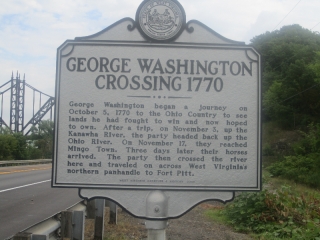Washington spent time observing the Indians and recorded some interesting entries in his journal of local interest. “The Indians are very dexterous, even their women, in the management of canoes, have their hunting camps and cabins all along the river for the convenience off transporting their skins to market. In the fall, as soon as the hunting season comes on, they set out with their families for this purpose; and in hunting will move their camps from place to place, till by the spring they get two or three hundred or more miles from their towns, then catch beaver on their way up, which frequently brings them into the month of May, when the women are employed in planting. The men are at market and in idleness till the autumn again, when they pursue the same course.”
Washington returned to Fort Pitt by crossing the Ohio River opposite present day Cross Creek just south of today’s Follansbee. He proceeded over land on trails now known as the “Washington Trail.” A historic marker indicating where he crossed the river is located south of the Wabash Bridge near Cross Creek.
- The Diaries of George Washington, Vol. 2, 1776-70, Ed., Donald Jackson, (University Press of Virginia, 1976), pp. 316 & 321.
- http://www.hmdb.org/Marker.asp?Marker=33913

